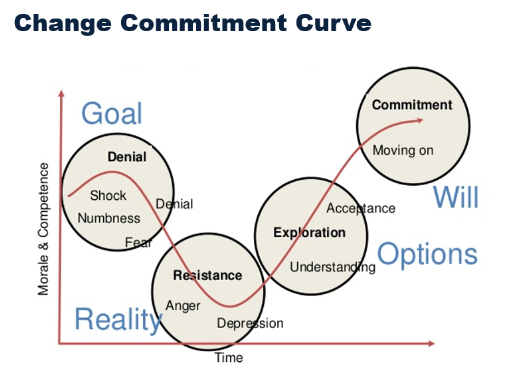
A global coronavirus crisis has taught us that we are living in a volatile, uncertain, complex, and ambiguous (VUCA) world. This virus has exposed vulnerabilities beyond our control, threatening our long-term health and economic stability. Critical to defeating this pandemic is ensuring global business continuity and a healthy global workforce. As a result, hundreds of millions of workers were asked in March 2020 to work from home, leading to immeasurable virtual workforce challenges.
While remote work is not a new concept for many, several issues have plagued the virtual worker throughout the years. For example, have you ever wondered why virtual workforce efforts at your organization are not successful or fail to stick? Or why your direct reports struggle to adapt to a remote work environment? Or perhaps you’ve wondered why people managers and leaders are challenged with engaging employees in a virtual work environment?
In this article, we’ll answer those questions and explore:
- why long-term virtual workforce efforts fail
- how to prepare, equip, support, and enable leaders in the virtual workforce of the future
- where workforce leaders and staff position themselves on the virtual workforce change curve
This information is designed to guide leaders, people managers and employees toward fully embracing a virtual workforce as ‘the way they work’.
But First, Why Do Virtual Workforces Fail?
- No Burning Platform
- No Sustainable Vision
- No Leadership Training (in a virtual workforce)
- No Virtual Role Modeling
- No Culture Integration
No Burning Platform
Up until now, there was not a compelling business reason for organizations to move to a virtual workforce environment. Yes, there were always cost efficiencies to be realized but those gains were often eclipsed by workforce inefficiencies. Before the COVID-19 pandemic, remote work was considered a perk, a convenience and / or a differentiator for many organizations globally. However, as of mid-March, the game has changed. A virtual workforce is not only critical, but essential to business continuity, increased productivity, and workforce health.
No Sustainable Vision
Lewis Carroll famously said: “If you don’t know where you are going, any road will get you there”. Unfortunately, many organizations knowingly (or unknowingly) subscribe to this philosophy when introducing virtual work environments. One of the greatest misnomers about a virtual workforce is that the same business rules, processes and norms apply for this model as they would for the more traditional model. Without a vision and a new, reimagined operating model and culture, virtual workforces will struggle to achieve long-term success.
No Leadership Training (for virtual workforce)
Preparing leaders and employees for success in virtual environments is one of the most overlooked gaps in virtual workforce deployments. Leaders and managers with a remote team are significantly underserved and lack the skills to effectively manage their subordinates in a virtual world. The lack of time invested in training has led to failed virtual workforce cultures and short-lived virtual workforce success. Leaders and managers who are challenged to lead in a virtual workforce quickly determine: ‘while it is one thing to know how to lead, it is another to learn how to lead in a virtual environment’.
No Virtual Role Modeling
Given the lack of training, it is not surprising that one of the leading reasons virtual workforces are often unsustainable is the lack of leaders who model the necessary skills, competencies and behaviors required in a virtual workforce. Without sufficient skills to model critical behaviors in a virtual work environment, their efforts are often perceived as ‘do as I say, not as I do’. What is needed are leaders who are willing to champion a virtual workforce and model critical behaviors. Without them, employee buy-in and long-term sustainability is at risk.
No Culture Integration
What differentiates one organization from another is their unique culture, including but not limited to, how they interact and support each other. Organizations invest heavily in establishing a culture that is unique to their specific core values. However, when leaders decide to move to a virtual workforce, they often fail to integrate the culture that once thrived within a traditional office / workforce setting. As a result, employees are left feeling isolated or disconnected and the culture they once supported is now obsolete. A culture integration plan is paramount to long-term success as organizations transition to a virtual workforce.
Flattening the Curve
When more than 200 million remote-enabled professionals were recently thrust into a new future of work, they were given a mandate to work from home full-time in the interest of public health and safety. This was the largest disruption to a global workforce in recent memory. For a substantial number of workers, however, remote work was nothing new. For the majority of others, however, working from home on a full-time basis was a complete paradigm shift in business operations and a radical departure from business as usual.
The seemingly insurmountable challenge that organizations faced was how to create a virtual workforce strategy (practically) overnight. This strategy should include a change management and communication plan that ensures leaders, people managers and employees fully embrace a virtual workforce as ‘the way they work’. The strategy should also include communication and training on how to use the collaboration tools required to be successful and productive in the new environment.
For illustration purposes, let’s look at a traditional human change curve. This is the journey that most employees experience as they encounter change. The change curve itself is agnostic as it applies to all human behavior, irrespective of the change experience. You’ll notice in the graphic below that humans will experience a dip in morale and/or productivity as they transition from the denial stage to the exploration stage of the curve. This is common with all change and is often referred to as the ‘valley of despair’ within major change transformation initiatives. How do you bridge this ‘valley of despair’?

Source: Kubler-Ross
Bridging the Valley of Despair
The millions of office workers who transitioned from a traditional workforce to a virtual workforce earlier this month experienced, and continue to experience, a dip in the change curve. Carefully managing a change to a virtual workforce is paramount to business stability and continuity. Further, how we help leaders, people managers and employees’ transition along the change curve is critical to their ability to embrace a virtual workforce as the ‘new normal’, at least temporarily if not in the foreseeable future.
How to Lead an Organization Through a Virtual Workforce Transition
Here are ten actions for leading organizations through a virtual workforce transition:
- Establish virtual role models to serve as transition champions
- Determine KPIs and define ‘what success looks like’ with a transition to a virtual workforce
- Develop a communication plan with targeted messaging
- Develop a change plan to manage leader / employee transition to a virtual way they work
- Conduct a stakeholder assessment to capture hearts, minds and fears of leaders / employees
- Execute a change impact analysis to determine old vs. new way to work
- Conduct a training needs analysis to identify skill gaps between traditional work and virtual work
- Conduct a readiness assessment to gauge leader/employee preparation
- Develop a training plan to ensure adequate skill building throughout the transition
- Continually survey virtual leaders, people managers and employees to measure success
Tips for Virtual Role Models
Like many of you, The CARA Group has always had the capability and full functionality to work remotely. Since we needed to transition, however, to a full-time virtual workforce as directed by the state of Illinois stay at home work order, our biggest win in the transition was through the establishment of virtual workforce change champions or ‘Virtual Role Models’. Without our Virtual Role Models, collectively, The CARA Group would not be up and to the right on the change curve. Below are some best practices and key behaviors required of a Virtual Role Model who will have ultimate influence over whether your organization fully embraces a Virtual Workforce as ‘the way they work’.
- Be vulnerable and share where you are on your own virtual workforce change curve
- Empathize with peers and subordinates
- Acknowledge new norms in a virtual workforce
- Share success (and failure) stories
- Remember the golden rule and apply it in a virtual workforce setting
- Celebrate, reinforce and reward desired virtual workforce behaviors
- Continue to skill-build to evolve virtual workforce capabilities
- Establish a virtual watercooler for employees to interact personally
- Recognize that the speed to transition and productivity in a virtual workforce will vary by individual
Click here to read CARA’s President and CEO’s perspective on Finding Our Strength to Lead in a VUCA world.
Please connect with us if you could use help with leading your organization through a virtual workforce transition or simply want to talk about your current situation as you ponder next steps. We’re here to help!
Where are You on the Virtual Workforce Change Curve?
Comment below to:
- Share where you (or your leaders) are at on the virtual workforce change curve
- Share your experiences in leading organizations toward embracing a virtual workforce as ‘the way they work’




Leading a virtual organization can become quite a challenge at times. With the help of proper training and guidance, these challenges can be overcome very easily. I really like the way you have explained this article in such a short and easy to understand manner. Thank you for sharing this article with us.
Thank you Bhuvi – I appreciate your feedback and perspective!